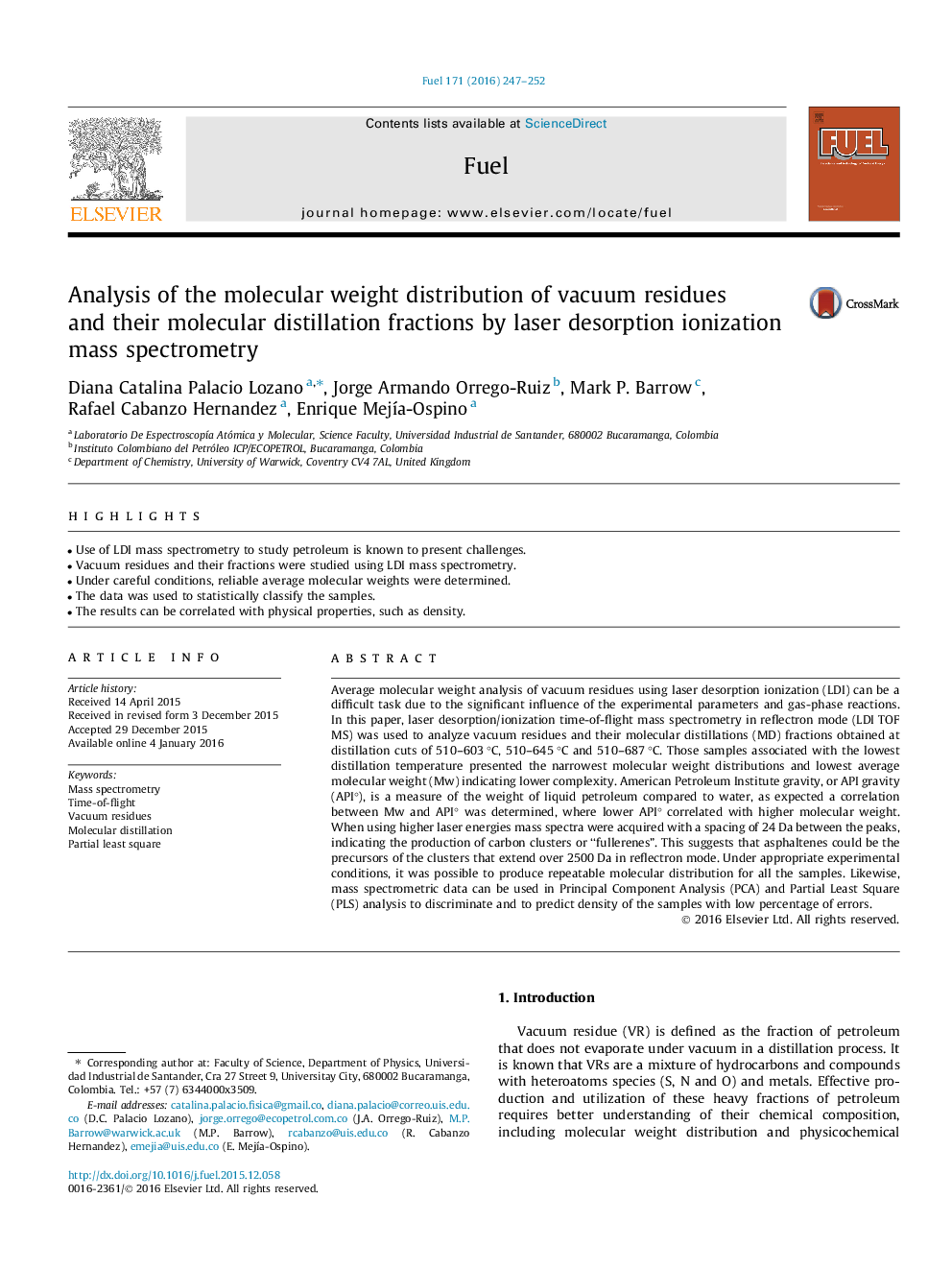| کد مقاله | کد نشریه | سال انتشار | مقاله انگلیسی | نسخه تمام متن |
|---|---|---|---|---|
| 205277 | 461102 | 2016 | 6 صفحه PDF | دانلود رایگان |
• Use of LDI mass spectrometry to study petroleum is known to present challenges.
• Vacuum residues and their fractions were studied using LDI mass spectrometry.
• Under careful conditions, reliable average molecular weights were determined.
• The data was used to statistically classify the samples.
• The results can be correlated with physical properties, such as density.
Average molecular weight analysis of vacuum residues using laser desorption ionization (LDI) can be a difficult task due to the significant influence of the experimental parameters and gas-phase reactions. In this paper, laser desorption/ionization time-of-flight mass spectrometry in reflectron mode (LDI TOF MS) was used to analyze vacuum residues and their molecular distillations (MD) fractions obtained at distillation cuts of 510–603 °C, 510–645 °C and 510–687 °C. Those samples associated with the lowest distillation temperature presented the narrowest molecular weight distributions and lowest average molecular weight (Mw) indicating lower complexity. American Petroleum Institute gravity, or API gravity (API°), is a measure of the weight of liquid petroleum compared to water, as expected a correlation between Mw and API° was determined, where lower API° correlated with higher molecular weight. When using higher laser energies mass spectra were acquired with a spacing of 24 Da between the peaks, indicating the production of carbon clusters or “fullerenes”. This suggests that asphaltenes could be the precursors of the clusters that extend over 2500 Da in reflectron mode. Under appropriate experimental conditions, it was possible to produce repeatable molecular distribution for all the samples. Likewise, mass spectrometric data can be used in Principal Component Analysis (PCA) and Partial Least Square (PLS) analysis to discriminate and to predict density of the samples with low percentage of errors.
Journal: Fuel - Volume 171, 1 May 2016, Pages 247–252
